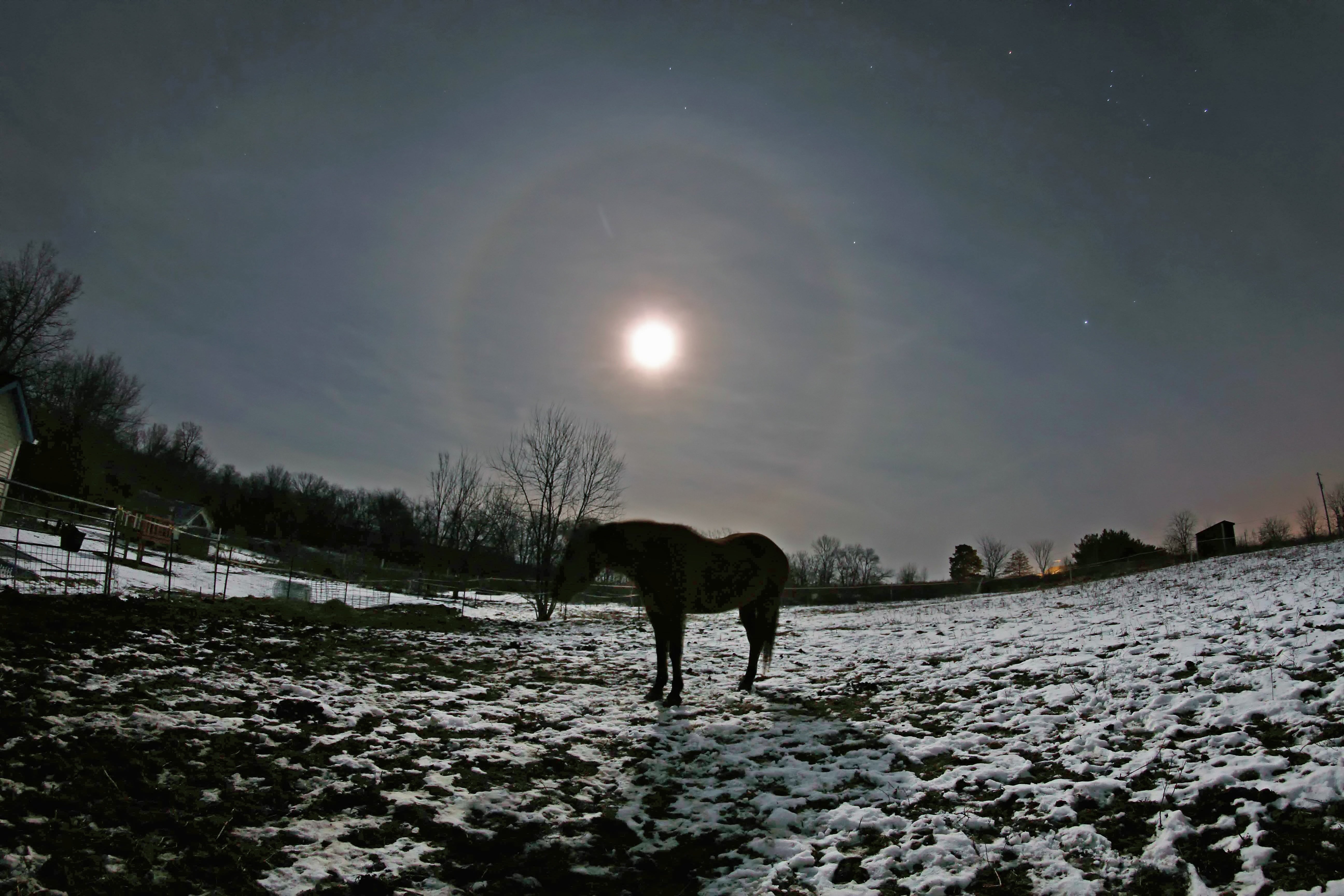
What you observed around the Sun is commonly called the 22° halo. It forms when high clouds made of tiny ice crystals bend the sunlight into a circle. The distance from the Sun is always 22° because that’s the angle of the light that comes out of the crystals. So, atmospheric scientists really should call the phenomenon the 44° halo because that’s its diameter.The crystals also act as tiny prisms, breaking the sunlight into its component colors, and this causes a rainbow effect. To be precise, 22° is just the average. Red light emerges at an angle of 21.54° and blue light at 22.37°. This difference causes the inner part of the circle to look reddish and the outer part bluish.Solar halos are uncommon but not rare. It takes just the right combination of cloud type and upper-air temperature to form them. And if conditions are right, you even can spot the same type of halo around the Full Moon, although because the Moon isn’t as bright as the Sun, the resulting halo also will be fainter.
Senior Editor









